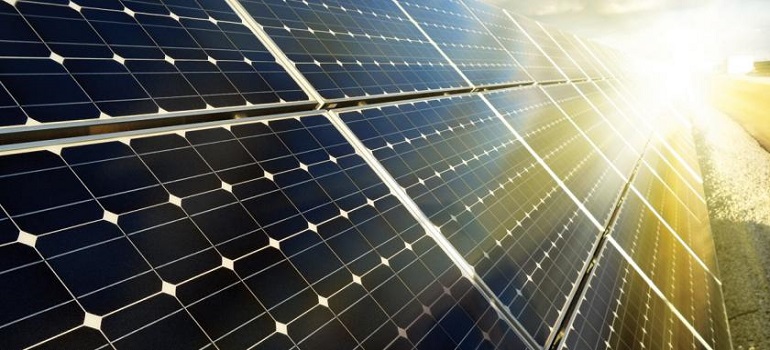 China’s decision to slap deployment caps and reduce feed-in-tariffs for solar projects may lead to a further plunge in module prices, which in turn is likely to result in a further reduction in solar power bid tariffs, say experts.
China’s decision to slap deployment caps and reduce feed-in-tariffs for solar projects may lead to a further plunge in module prices, which in turn is likely to result in a further reduction in solar power bid tariffs, say experts.
Chinese module price is expected to decline to 28-29 cents from the current average of is 33 cents a watt, following this announcement.
China, which added over 50 gw of solar capacity last year, and is expected to largely continue the momentum in 2018 as well. However, its recent move to slash subsidies for renewable energy may shave off significant capacity additions this year and expand the net module oversupply position.
“With China accounting for close to 90 per cent of the country’s solar module imports in 2017, fall in module prices is expected to benefit those seeking to expand their renewable energy portfolio,” Crisil infrastructure advisory director Pranav Master told.
He also said solar bid tariffs in the forthcoming tenders are likely to drop as developers will factor in the potential fall in module prices following the Chinese action.
Echoing similar views, solar advisory firm Gensol co- founder Anmol Jaggi said solar bids will become more competitive going forward.
“The tariffs, which will be discovered in the next rounds of inter-state transmission system bidding, could hit a new low. It may even breach the Rs 2.44 a unit pricing that was discovered during the Bhadla phase-IV bidding,” he said.
Jaggi further said the Chinese module price, which s averaging at 33 cents a watt now, is likely to decline to 28- 29 cents after this announcement.
He said the upcoming 5,000-mw tenders from the Solar Energy Corporation of India will see the bids further falling significantly following China slashing prices.
The recent amendment in competitive bidding guidelines for solar projects, which extended the timelines for project execution, is further likely to support the fall in tariffs as developers place orders for modules about six months later to take advantage of the expected drop in module prices, he said.
However, the cash-strapped distribution companies, in turn, will benefit from lower tariffs as it will reduce their power purchase costs and help achieve their RPO obligations, Master said.
On the flip-side, there would be an adverse impact on the domestic module manufacturers given that the price differential between Chinese and domestic modules would widen further from the current 10-15 per cent.
“Considering China’s recent plan to restrain its renewable energy targets, the rate of imported modules may fall further, hitting the domestic cell and module manufacturers,” Vikram Solar chief financial officer Rajendra Parakh said.
He also warned that the Chinese move will make the situation worse for the domestic industry as it comes at a time when the industry is already struggling due to falling margins, especially after the imposition of safeguard duty.
Currently, the country has 3,100 mw of installed capacity of solar cell manufacturing, of which 2,000 mw are in special economic zones (SEZs). Similarly, of the 8,300 mw of module manufacturing capacity, 3,800 mw are also in SEZs.
“If the safeguard duty is applied to all, the SEZ- based domestic manufacturers will also be liable to pay it whenever they sell modules domestically, defeating the very purpose having a safeguard duty in place.
Source: PTI


